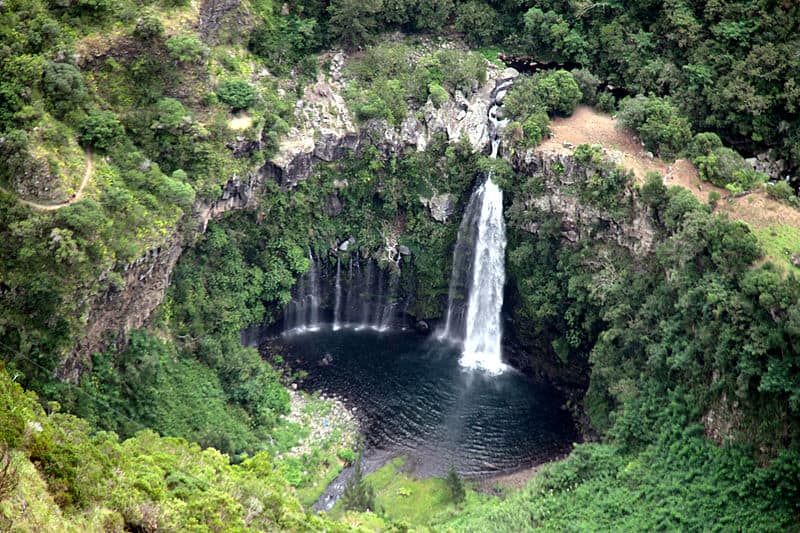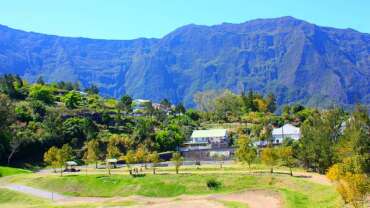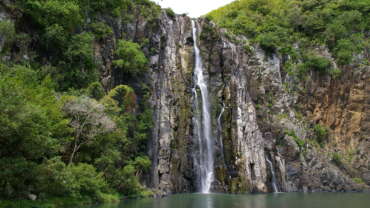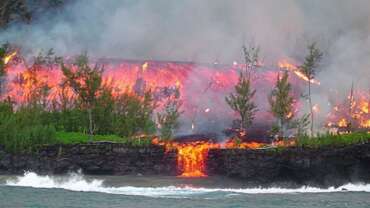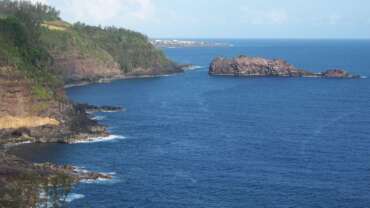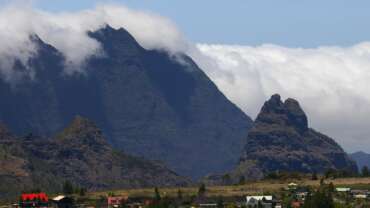Intensely Nature Reunion Island
UNESCO WORLD HERITAGE
The “Pitons, cirques and ramparts”
Since 2010, the pitons, cirques and ramparts of Reunion Island have been on the list of natural places classified as world heritage sites by UNESCO. bringing exceptional universal value to these superb places. More than 40% of the Reunion Island territory is listed as World Heritage. This jewel of the lndian Ocean has around 200 microclimates making it the ideal habitat for an incredibly diverse ecosystem: almost 3,000 native plant species have been recorded here and amongst the. 230 flora species are unique in the world!
Key features of the National Park
Reunion’s relief is a maze of valleys, dizzying drops, cirques, pitons, ramparts, forests, channels and rivers. You’ll hold your breath at the Trou de Fer viewpoint where waterfalls create gleaming channels as they tumble from a height of 1,000 metres into the chasm below. It’s a magical moment when you discover the immensity of the Piton de la Fournaise caldera. The Piton Maïdo rampart meets the Piton des Neiges, dwarfing the Trois Salazes ridges.
Get your hiking gear on and explore the mountains of Reunion Island!
– Three cirques – Mafate, Cilaos and Salazie – back onto the Piton des Neiges, each with its own uniqueness. Mafate, the hiker’s paradise, is a timeless oasis that can be reached only on foot or by helicopter. Cilaos is a succession of hairpin bends leading from hamlet to hamlet at the foot of the Piton des Neiges, the roof of the Indian Ocean. The lush green cirque of Salazie promises a breath of fresh air between waterfalls, hiking trails and the Creole culture.
– The Piton des Neiges towers above the entire Indian Ocean from a height of 3,071 metres. At the centre of the island, its ascent is rewarded with a fabulous 360° panoramic view.
– The Piton de la Fournaise, one of the world’s most active volcanoes, features a fascinating moon-desert landscape.
A tropical garden
Reunion Island has been listed by the International Union for Conservation of Nature (IUCN) as one of the world’s 34 biodiversity “hotspots”. The high areas of La Réunion National Park are home to some endemic species of highly unusual plants and wildlife. In this world of silence, soak up the fresh air, the special atmosphere, the humidity and the discreet sunshine that have allowed this unique ecosystem to flourish. Among the tamarinds, Japanese cedars, casuarinas, bamboos, Barbel palms, lichens, storax trees, tree ferns, orchids, eucalyptuses, cyatheas and palms, ancient specimens offer a nesting place to tropical birds.
An open window on the Indian Ocean
Besides the sumptuous “Peaks, cirques and ramparts”, the warm blue waters of the Indian Ocean surround the entire island and the volcanic slopes, the lagoon and the seabed stretching north, south, east and west towards the ocean depths.
With 207 kilometres of coastline, Reunion Island’s exceptionally well-preserved beaches of black or white sand stretch for a total of 30 kilometres, of which 22 kilometres border the lagoon. To enjoy the sea’s every facet, head for the island’s west and south coasts, where crystal-clear turquoise lagoons at 27° Celsius, protected by a coral reef and lifeguarded bathing areas, invite lovers of the sea to unwind, swim and have fun. Meet whales and dolphins, contemplate the sunset over the ocean, dive into the depths of the sea, swim in the lagoon, go snorkelling, discover an impressive blowhole, a beach of black sand, or a basalt river.



